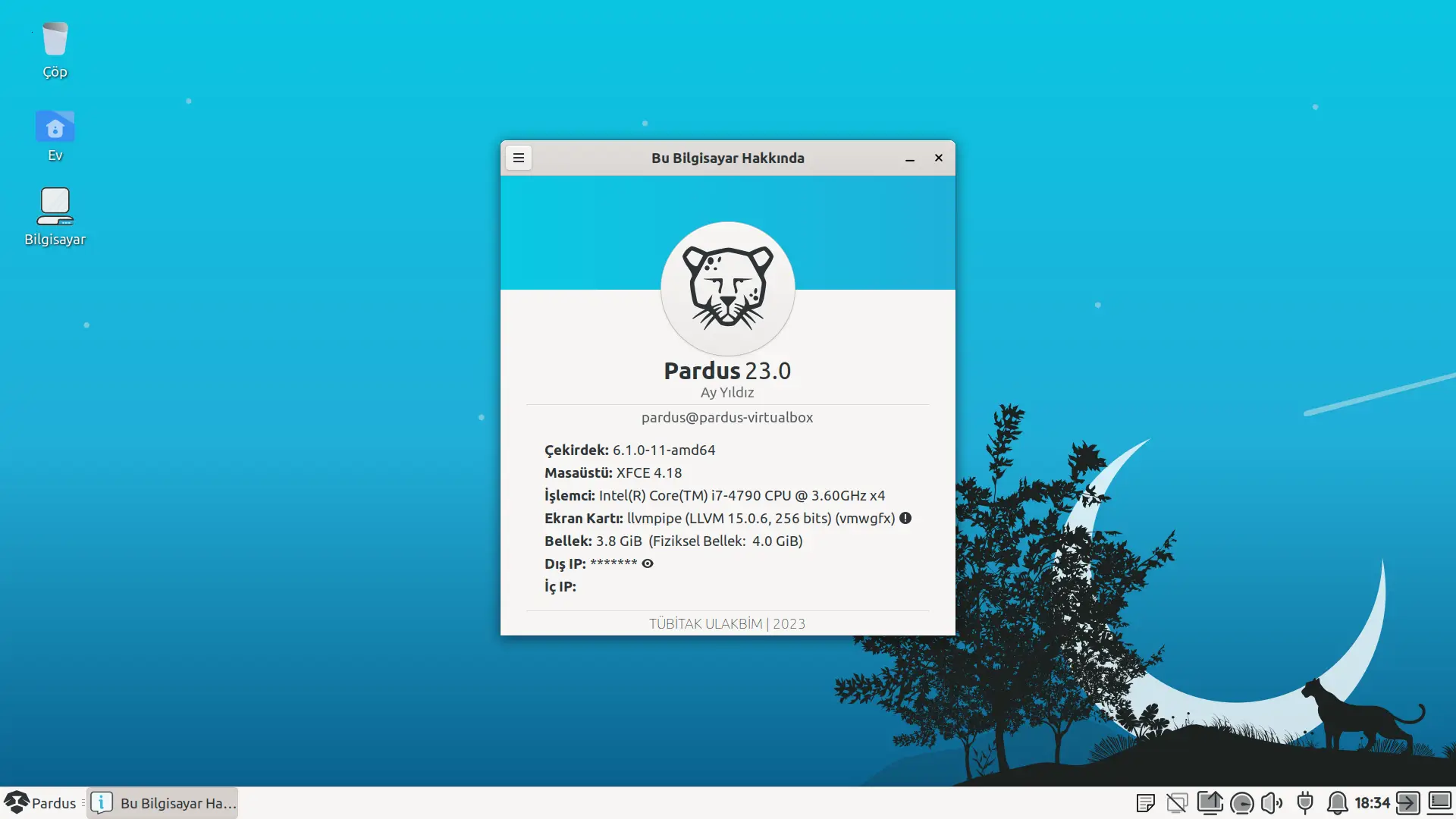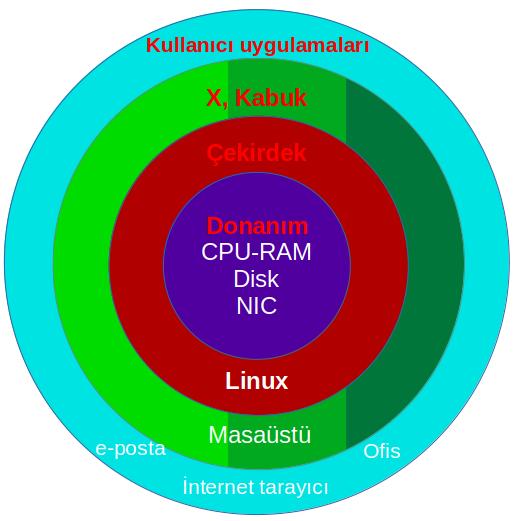
İşletim sisteminin merkezinde yer alan ve sistemde tam kontrole sahip olan yazılıma işletim sistemi çekirdeği diyebiliriz. Çekirdek -kernel- işletim sistemi kodunun her zaman bellekte bulunan bölümü olup sistemimizin bellek, CPU gibi üniteleri ve yazılımların çalışmasını yönetir.
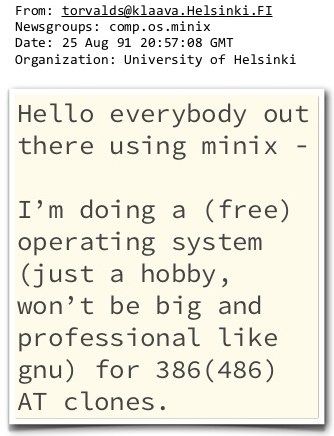
Yukarıda bahsettiğimiz GNU, çekirdek olarak yaygın bir şekilde Linux çekirdeğini kullanır. Dolayısıyla Linux çekirdeği üzerindeki GNU araçlarıyla -yazılımlarıyla- bir işletim sistemini oluşturur ve bu sebeple adlandırırken GNU/Linux şeklinde belirtmemiz çok daha doğru olacaktır.

Çekirdek ve çekirdek türleri detayına bu belgelendirmede değinmeyeceğiz ancak sizler İnternet ’ten detaylı bilgilere erişebilirsiniz.
Kabuk -shell- için ise kullanıcıdan aldığı girdileri işletim sistemine ileten programdır diyebiliriz. Kabukları komut satırı arabirimi (CLI) ya da grafik kullanıcı arabirimi (GUI) olarak ayırabiliriz.
Bu eğitimde “bash” kabuğu üzerinde uygulamalar gerçekleştireceğiz.
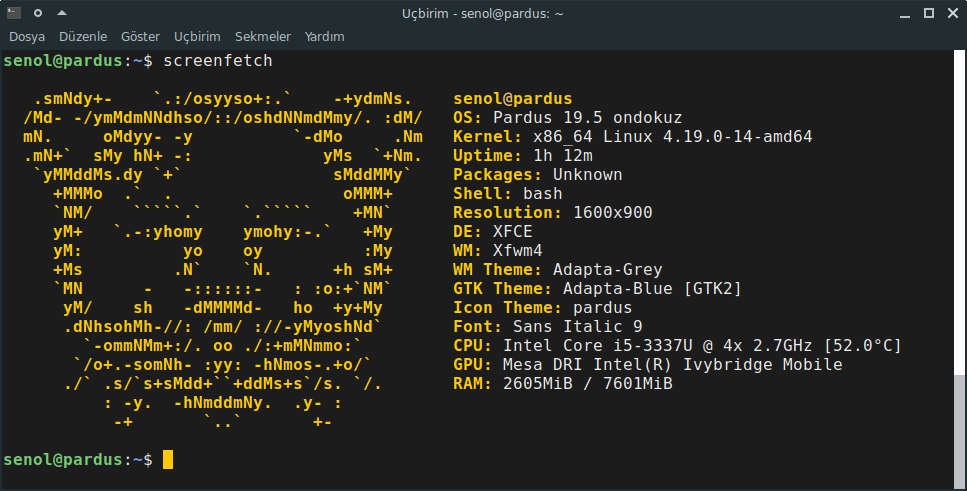
“Bash”, “GNU/Linux” sitemlerde yaygın olarak kullanılan uçbirim/terminal. UNIX sistemlerde kullanılan Steve Bourne tarafından yazılan “sh” komut yorumlayıcısının ‑terminal- yerine yazılmıştır ve bu yüzden “sh” ın yazarına atfen BASH -Bourne Again SHell- olarak adlandırılmıştır.
Kullandığınız kabuğu aşağıdaki komutlar ile öğrenebilirsiniz.
echo $0
echo $SHELL
Çıktı:
/bin/bash
Yaygın kullanılan Unix ve GNU/Linux komut yorumlayıcıları:
- Sh, – Bourne shell
- Bash, – Bourne Again shell
- Ksh, – Korn shell
- Tcsh / Csh
- Zsh
- Fish
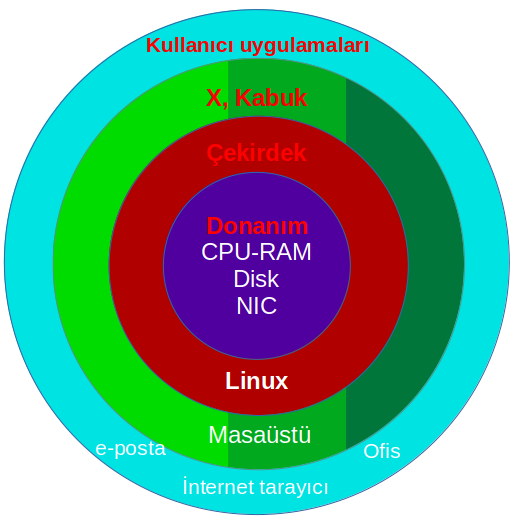
Araştırma konuları: UNIX, BSD
Sonraki >> Masaüstü Ortamları -GUI-
İlginizi Çekebilir
ETAP’ta Pencereleri Yönetmenin En İyi Yolu: gTile ile Verimliliğinizi Artırın!
Nasıl?
19 Şub '25Pardus Güncel Nvidia Sürücü Kurulumu
Blog
26 Ara '24Bir git tabanlı projede yazma iznine sahip olmak isteyen Hackerlar(Yazılımcılar) için Kılavuz
Nasıl?
15 Şub '24Az bilinen nano özellikleri
Nasıl?
9 Şub '24



